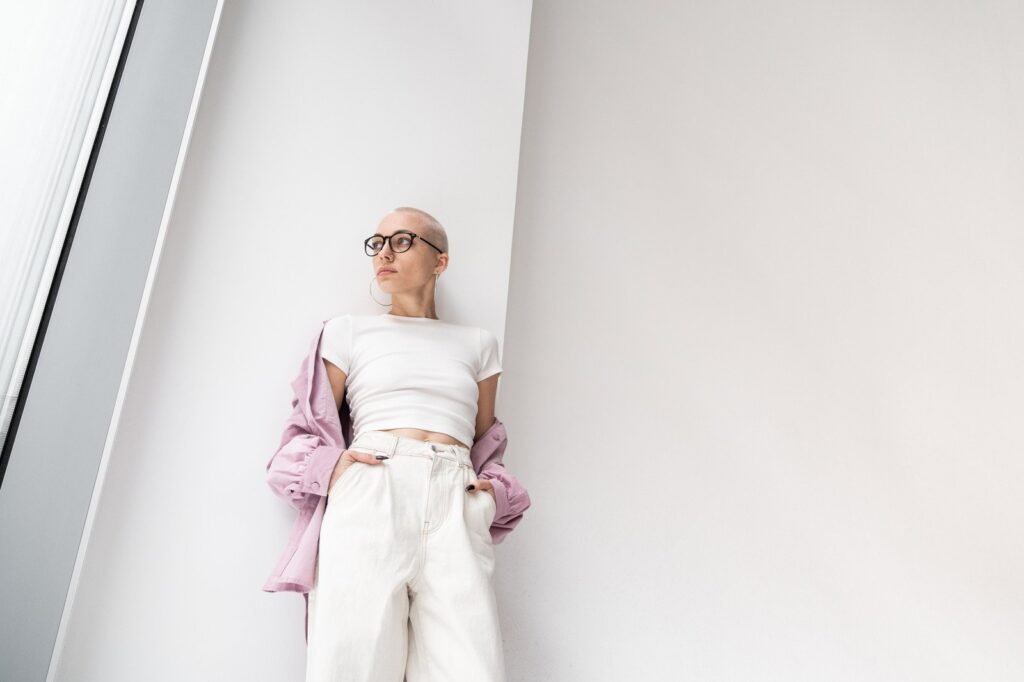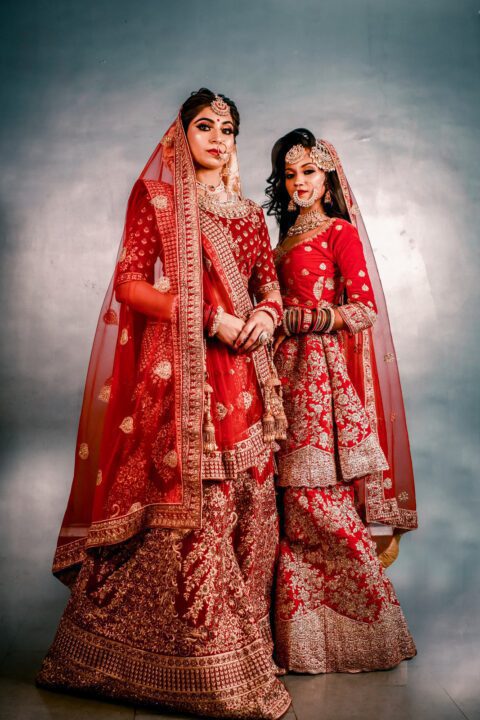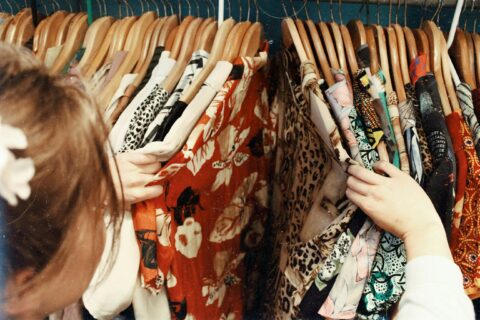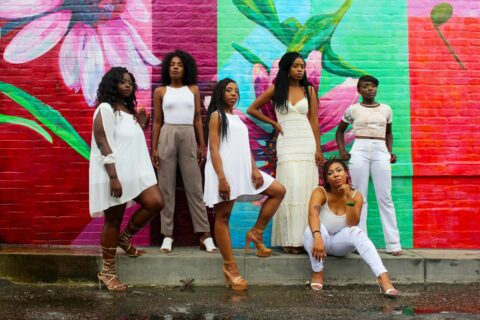Introduction to the ever-evolving world of fashion
Step into the world of fashion, where trends are born and style is constantly evolving. From the runways of Paris to the streets of Tokyo, fashion has become a universal language that speaks volumes about who we are and how we express ourselves. It’s an ever-changing landscape with new ideas sprouting up like wildflowers, influenced by social media, sustainability movements, and a desire to break free from traditional norms. In this blog post, we’ll explore the latest trends in fashion and uncover what’s shaping today’s sartorial scene. So buckle up and get ready for a fashionable journey through the trend tracker!
The impact of social media and influencers on trends
Social media and influencers have undoubtedly become powerful catalysts in shaping today’s fashion landscape. With the rise of platforms like Instagram, YouTube, and TikTok, trends now spread faster than ever before. Fashion bloggers and social media stars have gained significant influence over consumer preferences, often dictating what is considered stylish or on-trend.
These digital tastemakers showcase their unique style and provide inspiration to millions of followers around the world. By sharing outfit ideas, promoting brands they collaborate with, and attending high-profile fashion events, influencers play a crucial role in setting trends. Their ability to connect directly with their audience allows for immediate feedback and engagement.
Influencers also bridge the gap between consumers and brands by providing authentic product reviews and recommendations. This has revolutionized the way people shop for clothing online as they can trust these influential figures’ opinions when making purchasing decisions.
Moreover, social media platforms give smaller designers an opportunity to gain exposure that was once reserved for established fashion houses. Influencers are drawn to more niche or independent labels because it allows them to stand out from other influencers who may be promoting similar styles from mainstream brands.
However, there is also criticism surrounding this trend-setting phenomenon. Some argue that social media creates a sense of homogeneity within fashion where everyone strives to achieve a certain look or follow specific trends dictated by popular influencers.
Nevertheless, it cannot be denied that social media has democratized fashion by giving anyone with a smartphone access to endless style inspiration and allowing them to express themselves creatively through their personal style choices.
As we continue into the future of fashion trends influenced by social media personalities remains uncertain but one thing is clear: this new era has forever changed how we discover, consume, and engage with fashion content.
Sustainability and ethical practices in fashion
Sustainability and ethical practices have become increasingly important in the fashion industry. With growing awareness about the environmental impact of fast fashion, consumers are now seeking out brands that prioritize sustainability.
Many fashion companies are taking steps to reduce their carbon footprint by using recycled materials or sustainable fibers like organic cotton or hemp. They are also implementing better production practices to minimize waste and pollution. These initiatives help create a more eco-friendly and responsible approach to fashion.
In addition to environmental considerations, ethical practices in fashion focus on fair labor conditions and workers’ rights. Brands are striving to ensure that their supply chains adhere to fair trade principles, providing safe working conditions and fair wages for garment workers.
Consumers are becoming more mindful of where their clothes come from, as well as the social impact of their purchase decisions. By supporting brands that prioritize sustainability and ethics, they can contribute towards a positive change in the industry.
Sustainability and ethical practices have become integral aspects of today’s fashion landscape. As consumers continue to demand transparency from brands, it is crucial for businesses to adapt their practices accordingly, embracing sustainable alternatives while prioritizing workers’ welfare throughout the entire supply chain.
The rise of streetwear and athleisure
The fashion landscape is constantly evolving, and one trend that has taken the industry by storm in recent years is the rise of streetwear and athleisure. No longer confined to just sports arenas or casual weekends, these styles have become a staple in wardrobes around the world.
Streetwear combines elements of hip-hop culture, skateboarding, and urban fashion to create a unique and edgy look. It’s all about mixing high-end designer pieces with more affordable brands to achieve an effortlessly cool aesthetic. From oversized hoodies to graphic tees and sneakers, streetwear allows individuals to express their personal style in a bold and unconventional way.
Athleisure, on the other hand, focuses on merging athletic wear with everyday clothing. This trend has gained popularity as people seek comfort without sacrificing style. Leggings paired with oversized sweatshirts or joggers styled with sleek bomber jackets are just some examples of how athleisure blurs the line between workout gear and everyday attire.
What sets streetwear and athleisure apart from traditional fashion is their emphasis on functionality and comfort while still being fashionable. These trends cater to our fast-paced modern lifestyle where versatility is key.
Celebrities like Kanye West with his Yeezy brand have played a significant role in popularizing streetwear globally. Their influence extends beyond red carpets into mainstream culture making it accessible for everyone – regardless of age or gender identity.
Social media platforms like Instagram have also contributed greatly to this phenomenon by allowing influencers to showcase their personal style choices effortlessly through curated feeds that inspire millions of followers worldwide.
With its roots deeply embedded in youth subcultures such as skateboarding and hip-hop music scenes, streetwear reflects not only individuality but also rebellion against mainstream fashion norms giving us a sense of authenticity that resonates across different cultures globally.
So whether you’re rocking an oversized hoodie paired with distressed jeans or sporting leggings outside the gym with confidence – embrace these trends as they continue to dominate the fashion landscape. Streetwear and athleisure are here to stay
Gender-fluid and inclusive fashion
Gender-fluid and inclusive fashion has been making waves in the fashion industry, breaking down traditional norms and embracing individuality. Designers are challenging gender stereotypes by creating clothing that can be worn by people of any gender identity. This movement is about celebrating diversity and allowing individuals to express themselves authentically through their style choices.
One of the key aspects of gender-fluid and inclusive fashion is the emphasis on comfortable yet stylish pieces that can be mixed and matched to create unique looks. Gone are the days when certain styles were solely associated with a specific gender – now it’s all about personal preference and self-expression.
The rise of non-binary models and influencers has also played a significant role in promoting this shift towards inclusivity. By featuring diverse faces in campaigns and runway shows, the fashion industry is sending a powerful message that everyone deserves representation.
Moreover, brands are collaborating with LGBTQ+ organizations to not only raise awareness but also actively support these communities. These collaborations often result in limited-edition collections or capsule lines that celebrate queer culture while bringing attention to important social issues.
It’s refreshing to see how society is becoming more accepting of different ways of expressing oneself, regardless of traditional notions around femininity or masculinity. And as this trend continues to gain momentum, we can expect even greater strides towards inclusivity within the fashion world.
Gender-fluid and inclusive fashion represents a significant shift in how we approach style. It challenges societal expectations, promotes acceptance, celebrates individuality, and offers freedom for self-expression without conforming to rigid norms. It’s an exciting time for those who believe in breaking boundaries through their clothing choices!
Revival of vintage and retro styles
Revival of Vintage and Retro Styles
Step back in time and embrace the nostalgia! The fashion industry is experiencing a resurgence of vintage and retro styles, taking inspiration from past eras to create fresh, yet familiar looks. From flared jeans to polka dot dresses, these old-school trends are making their way back into our wardrobes.
One popular trend that has made a comeback is the 90s grunge look. Think plaid shirts, ripped denim, and chunky boots. This edgy style adds a rebellious touch to any outfit and gives off a cool-girl vibe. Pair it with some statement accessories like chokers or oversized sunglasses for an extra dose of retro flair.
Another iconic era being revived is the 80s fashion scene. Bold colors, power shoulders, and high-waisted pants are dominating runways once again. Neon hues have been particularly popular recently – electric pinks, vibrant greens – you name it! These eye-catching shades add an instant boost of energy to any ensemble.
And let’s not forget about vintage-inspired prints! Paisley patterns are resurfacing as well as psychedelic tie-dye designs that bring us back to the groovy days of the 70s. Incorporating these unique prints into your wardrobe can instantly elevate your style game.
The revival of vintage and retro styles allows us to connect with different periods in history while adding our own modern twist. It’s all about mixing old with new; pairing classic pieces with contemporary items creates a perfect balance between nostalgia and current trends.
So why not raid your parents’ closets or hit up thrift stores? You never know what hidden gems you might find that will transport you back in time while keeping you on-trend. Embrace the past while embracing your own individuality through fashion!
Future predictions for the fashion industry
The future of the fashion industry holds infinite possibilities. As technology continues to advance, we can expect to see more innovative and interactive designs. From 3D-printed garments that perfectly fit each individual’s body measurements to wearable tech that seamlessly integrates into our daily lives, the boundaries of fashion are set to be pushed even further.
In terms of sustainability, there will likely be a greater emphasis on eco-friendly materials and production methods. With consumers becoming increasingly conscious about their environmental impact, brands will need to adapt by adopting greener practices. We may see a rise in biodegradable fabrics and circular fashion initiatives that encourage recycling and reducing waste.
Another trend on the horizon is virtual reality (VR) and augmented reality (AR) experiences within the realm of fashion. Imagine being able to virtually try on outfits from your favorite brands without leaving your home or attending a physical store! This technology has the potential to revolutionize shopping as we know it.
Furthermore, inclusivity will continue to shape the future of fashion. The industry has made significant strides towards embracing diversity in recent years, but there is still progress to be made. We can anticipate seeing more representation across different body types, ages, races, genders, abilities – ensuring that everyone feels seen and celebrated within the world of fashion.
Customization will become increasingly prevalent in the future. Personalization allows individuals to express their unique style through tailored pieces or DIY projects. Whether it’s designing your own sneakers or customizing jewelry online with just a few clicks – fashion will become an even more personalized experience.
In conclusion
With technological advancements driving innovation in design and sustainability becoming paramount for conscious consumers; with VR/AR changing how we shop; with inclusivity expanding its reach; and customization taking center stage – it’s safe to say that the future of fashion is bright with endless opportunities for self-expression.
Conclusion: Embracing individuality and expression through fashion
In a world that is constantly changing, fashion remains a powerful means of self-expression and individuality. From the impact of social media to the rise of sustainable practices, the fashion landscape has transformed in remarkable ways.
Fashion influencers and social media platforms have revolutionized how trends are created and spread. With just a click, we can access endless inspiration from people all over the world, giving us the freedom to explore different styles and experiment with our own unique looks.
Sustainability and ethical practices have become significant considerations for consumers. The demand for environmentally friendly materials and fair labor conditions has led to an increase in conscious shopping choices. As more brands embrace sustainability, they contribute to a shift towards a more responsible industry.
Streetwear and athleisure have taken center stage in recent years, blurring the lines between casual wear and high fashion. Comfortable yet stylish clothing has become increasingly popular as people prioritize both comfortability and style in their everyday outfits.
Gender-fluidity is no longer confined within traditional boundaries but celebrated through inclusive fashion options. Designers are challenging societal norms by creating clothes that transcend gender stereotypes, allowing individuals to express themselves authentically without fear or judgment.
The revival of vintage and retro styles showcases how history continues to inspire contemporary fashion trends. Nostalgia plays an essential role in today’s landscape as designers reinterpret classic silhouettes with modern twists, breathing new life into iconic pieces from past decades.
As we look ahead into the future of fashion, it’s clear that this ever-evolving industry will continue to surprise us with innovative ideas and boundary-pushing creativity. With technology advancements like virtual reality experiences on runways or smart fabrics integrating wearable tech seamlessly into garments, there is undoubtedly much excitement on the horizon!
In conclusion (without using those words), embracing individuality through personal style allows us not only to express ourselves but also connect with others who share similar interests or values within this vast global community called “fashion”. Let us celebrate the diversity and uniqueness that each individual brings to the tapestry






